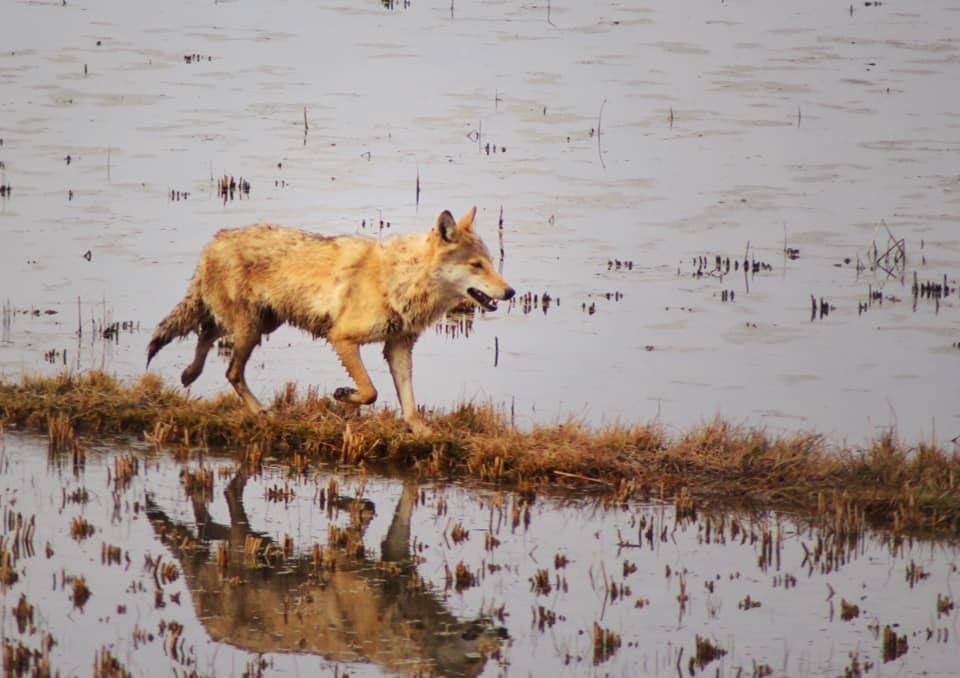Malik Sumeed
Budgam 21 Feb (KNB): A Rare and Elusive Sub specie of Himalayan Wolf has been spotted in the Budgam of Kashmir which may give a significant boost to the efforts aimed at the conservation of the species.
“I was on the way to my birding hotspot and found a pack 3 Himalayan wolves first I thought of golden Jackal or red fox after posting pic on social platform experts identified it as a sub specie of Himalayan Wolf. “ Said Akhter Ali a well known birder from Kashmir.
The evidence of presence of specie was also confirmed by Aaliya Mir of Wildlife SOS who got the call from locals from nearby area where the pack was sighted some year back but at that time she could not sight the specie but collected pug marks of same. Most of experts of wildlife have identified this specie as Sub-Specie of Himalayan Grey Wolf.
The wolf in Bhutan, India, Nepal, and Pakistan is listed on CITES Appendix I.In India, the wolf is protected under Schedule I of the Wildlife Protection Act, 1972, which prohibits hunting; a zoo needs a permission from the government to acquire a wolf. It is listed as endangered in Jammu and Kashmir, Himachal Pradesh, and Uttarakhand, where a large portion of the wolf population lives outside the protected area network.
Zakir Hussain Najar a Ph.D Scholar from University of Kashmir said, Wolves throughout the world also use human settlements for the food. But for Himalayan wolf it is amazing because it prefers higher altitudes rather than low lands or lower altitudes. For the habitats where the wild prey diversity or abundance is low, Wolves often predate on livestock that is why Wolf among all carnivores that inhabit the Himalayas, is the key and main predator that leads to human carnivore conflict . Himalayan Wolves use lower altitudes only when there is scarcity of prey, i often used to see their evidence in the surrounding of human settlements especially autumn and winter in my study area (Hirpora Wildlife Sanctuary) during my field work.
In conclusion, i can say that the decline of wild prey species of wolf in the natural habitats is the primary and key cause of this observation.(KNB)

















Leave a Reply